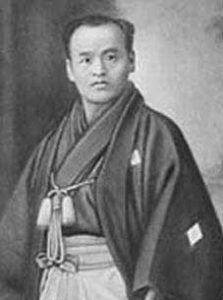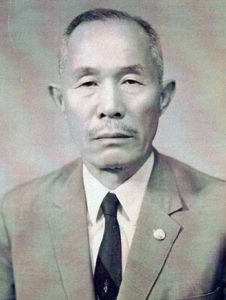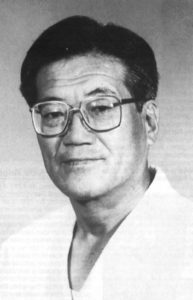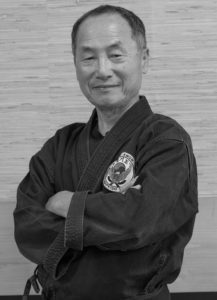HISTORY OF HAPKIDO
To know the history of Hapkido, is to know the history of Jujutsu. One of the last Samurai of Feudal Japan was Takeda Sokaku. He was the most famous Jujutsu practitioners and sought-after instructor of his time. He founded the Daito Ryu (Japanese translation for Great School) Jujutsu.

Takeda Sokaku (October 10, 1859 - April 25, 1942) practiced the Martial Arts system that had been passed down through his family for hundreds of years. He was the founder of a Jujitsu system known as Daito Ryu Jujutsu and later known as Daito Ryu Aiki Jujutsu. Two of Takeda Sokaku most notable students would go off to start their own systems of Martial Arts. Morihei Ueshiba would establish a system in Japan that would become known as Aikido, and Choi Yong Sool would establish a system in Korea that became known as Hapkido.

Choi Yong Sool (November 5, 1904 - June 15, 1986), after serving over 30 years as Takeda Sokaku's servant and teaching assistant, he returned to the country of his birth, Korea and taught Takeda Sokaku's Daito Ryu Aiki Jujutsu system first calling it Yu Sul, Yu Sool or Yawara (Korean translation for Jujutsu). Choi Yong Sool most notable student, recognized for the evolution of the art that became known as Hapkido was Ji Han Jae.

Ji Han Jae (October 27, 1936) took the Yu Sul training he learned from Choi Yong Sool and he along with his senior students incorporated the kicking techniques of Sam Rand DO Tek Gi, Korean weapons training and other traditional Korean Martial Arts to add to the current curriculum, Ji Han Jae along with his senior student would develop self-defense tactics to deal with techniques against Boxing, Tang Soo Do, Tae Kwon Do and Judo. Ji Han Hae's longest and most notable student was Tae Man Kwon.

Tae Man Kwon (November 27, 1941) was Ji Han Jae's earliest student. Training under Ji Han Jae from his first school in Andong in 1956 and accompany Ji Han Jae when he moved the school in 1957 to Seoul, and again when Ji Han Jae moved in 1958 to Joongbooshijang. Tae Man Kwon was one of the original Hapkido Instructors involved in the development and implementation of the kicking and weapons techniques incorporated into Hapkido with Ji Han Jae.
In 1964, he opened his first Hapkido School in Incheon City. During this time he instructed U.S. Army personnel stationed at ASCOM (Army Support Command Korea) DEPOT in South Korea, as well as at his private school.
In 1967, Grand Master Kwon was sent by the Korean Hapkido Association to be part of a demonstration team to Vietnam teaching Korean U.S. and Vietnamese troops as well as Special Forces.
In 1971, he was promoted to master instructor by the Korea Hapkido Association and became its chief judge for testing and promotions.
Grand Master Kwon immigrated to the United States and settled in Southern California. In 1973, he opened a school in Palos Verdes and later in Torrance. There, he and fellow students Kim Cong-Sung and Han Bong-Soo formed an early Hapkido Association and worked together to promote the art and support each other's efforts.
Tae Man Kwon, currently a 10th-degree Senior Grand Master, has owned and operated his own Hapkido schools since 1964, teaching the complete system of traditional Korean Hapkido developed by his instructor Ji Han Jae.
Tae Man Kwon has now begun to grant permission to teach his authentic Hapkido system to his Senior Certified and Licensed Instructors.